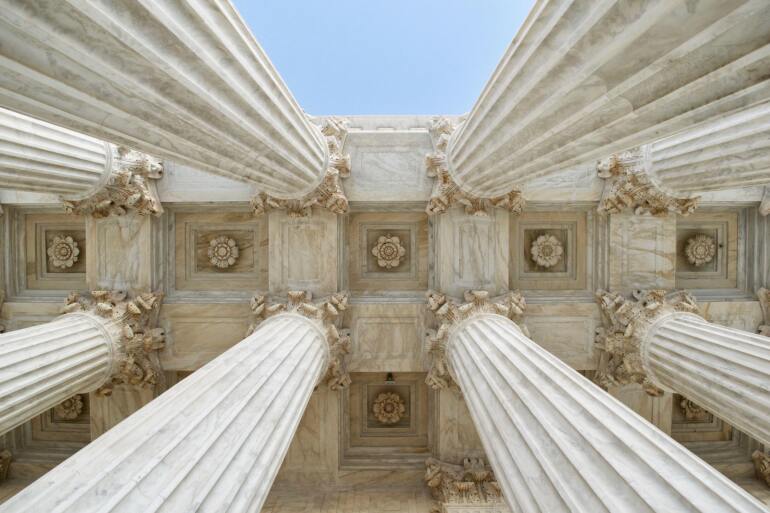Legal Update
Aug 21, 2020
$1 Million PPP Loans for Auto Dealers: Lifeline or Added Debt?
Like so many other businesses, auto dealers sought and received loans from the Small Business Administration’s (“SBA”) Paycheck Protection Program (“PPP”). The COVID-19 pandemic and the resulting state and local shut down orders effectively closed many dealership showrooms and securing PPP loans were seen as a lifesaver for many dealers.
We now know that not only did a significant number of dealers seek PPP loans, but many sought and received loans over $1 million. According to a recent article in the Wall Street Journal, between April and June 2020, 3,588 auto dealers were approved for PPP loans in excess of $1 million. Based on the latest NADA dealer census, with 16,682 new car dealership in the United States, that means more than 20% of all U.S. auto dealers are now carrying PPP loans in excess of $1 million. Undoubtedly, there are many other dealers carrying smaller PPP loans. The surge in auto dealer SBA loans is further evidenced by a dramatic increase in the number and scope of OEMs listed on the SBA Franchise Directory, which the SBA publishes to allow lenders to quickly determine whether the contractual relationship between an OEM and its dealer qualifies the dealer as a “small business.” Prior to 2020, only 6 OEMs were listed in the SBA Franchise Directory. Between March 31 and April 22, 2020, at least 24 OEMs, virtually every major brand in the United States, luxury and otherwise, were added to the directory. All of this confirms that both OEMs and dealers saw PPP loans as an essential component of dealers surviving the financial distress caused by the COVID-19 shutdowns.
We have previously detailed the SBA PPP Program, including the requirements for loan forgiveness. Being able to have the PPP loan forgiven was obviously what made the program so attractive. If used correctly it wasn’t really a loan, but a grant from the Federal Government. PPP loans can be used to pay for various expenses, but in order to qualify for loan forgiveness, at least 60% of the loan proceeds must be used to cover payroll expenses and the recipient must maintain staffing and salary levels at pre-COVID levels. If PPP loan recipients lay off staff, reduce salaries, or fail to rehire employees, the loan amount eligible for forgiveness decreases. For the auto industry, with more than 20% of dealers carrying PPP loans of more than $1 million, qualifying for loan forgiveness is essential.
So, are these PPP loans a lifeline for the US auto dealer network? Maybe. While the loans provided immediate financial relief to dealers who saw sales plummet in March and April and who sought to avoid wholesale layoffs or furloughs, making sure they qualify for the loan forgiveness is essential. While the loan terms are exceedingly favorable (interest rate of 1% and repayment over two to five years depending on when the loan was issued), it is still a loan which would add to a dealer’s overall debt.
Based on the combination of government shut downs, consumers’ aversion to in-person car shopping, and fewer cars on the road as more employees work from home, dealers saw auto sales plummet (decreasing revenue) while operational costs associated with COVID increased. As retailers implement social distancing and enhanced cleaning protocols, facility-related costs necessarily increased adding to the financial stress facing many dealers. The combination of decreased revenue and increased costs may impact how PPP loan proceeds are used. If dealers redirect PPP monies from payroll to COVID-related operational costs, PPP loan forgiveness will be reduced, obligating them to repaying some, if not all, of the PPP loans.
Given the already-significant challenges brought about by the evolution to EVs and AVs, the proliferation of ride sharing, and subscription services, the auto industry and dealers were already facing the need to pivot and adapt. Also, while some are forecasting that individual car ownership will increase in a post-COVID world, as people choose the safety of car travel over public transportation, others, including a recent KPMG study see remote work and online retailing leading to “fewer trips, fewer miles, [and ultimately] fewer cars.” Indeed many forecast rough times ahead. There is little question the COVID-19 pandemic has accelerated years of change. For some, COVID-19 and the new auto retailing environment and challenges present new opportunities, while for others, it means financial distress. For dealers carrying PPP loans, it is essential that they are positioned to obtain PPP loan forgiveness. Otherwise, they face the added challenge of more debt.



